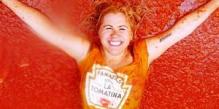Positive illicit drug tests rise in AFL
Stimulants such as cocaine are becoming the drug of choice for players caught under the AFL's illicit drugs program.
The number of positive tests under the controversial "three strikes" program rose from 12 in 2008 to 14 last year, while the number who went positive a second time stayed steady at two - meaning 12 players in total were caught.
While league operations manager Adrian Anderson claimed a fifth-straight drop in the rate of positive tests was a "phenomenal" result, the AFL will introduce more new measures as they try to eradicate illicit drug use from the game.
Most of the positive tests happened in the players' holiday period and that has led to a new education program immediately before they go on their annual breaks.
In an effort to stop repeat positive tests, every player who fails a test must now undergo a medical assessment.
The AFL and the players' association have also agreed to extend the hair testing trial by two years.
When the illicit drug testing started in 2005, six players went positive for cannabinoids, such as marijuana, while 12 were for stimulants.
Last year, 13 of the 14 positives were for stimulants.
"The trend has been to stimulants - cocaine, ecstasy and ice," said AFL medical commissioner Dr Peter Harcourt.
"The emerging drug over the last two years has been cocaine."
The AFL dramatically increased the number of urine tests, from 1220 in 2008 to 1568 last year, but Dr Harcourt doubts that trend needs to continue.
"We're probably at a threshold level now where there's enough testing of AFL footballers," he said.
"That's why you see us looking for other more novel approaches, such as hair testing, which gives us a much broader insight into what a player might have done over a few months.
"We're trying to get smarter with our testing."
The AFL's illicit drugs program is separate to the sport's standard anti-doping policy.
Under the illicit drugs policy, players who return positive tests controversially remain anonymous unless they there is a third positive within a four-year period.
No player has returned a third positive test since the program started, but the league remains worried about repeat offenders.
"We're very concerned about situations where we haven't got to the problem of an individual player after one detection," he said.
"That's why you see this year, we're introducing a mandatory drug and alcohol physician assessment after the first positive.
"Our intention is try and pick up those individuals earlier."
 © 2025 AAP
© 2025 AAP















Post a comment about this article
Please sign in to leave a comment.
Becoming a member is free and easy, sign up here.